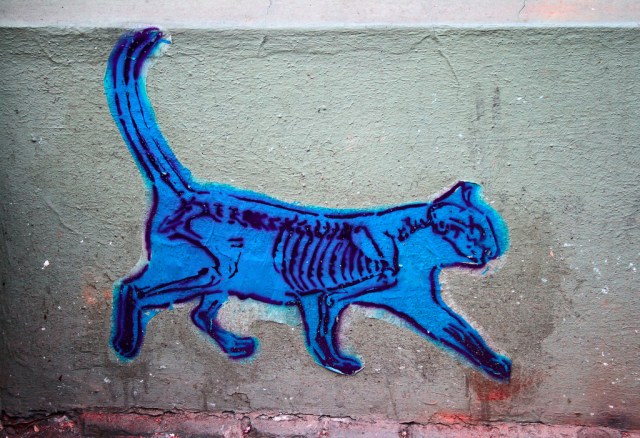Egyptian Cats Domesticated 2,000 Years Earlier Than We Thought, According To These Kitten Bones
Who's a widdle recently discovered corpse? You are! Yes you are!

Dead kittens are usually the punchline to a very tired and overly-done kind of joke on the Internet, but to scientists who’ve been surveying a cemetery in Hierakonpolis, Egypt, they’re a very important archeological discovery that may help us pin down when exactly the human species first began to domesticate cats.
The complete skeletons of two adult cats and four kittens were discovered in the eastern wall of a tomb for the wealthy back in in 2008 — apparently a rare find in the archaeological community. By charting the rate of growth and comparing the jaws of the skeletons to those of wild European cats from the same time period, archeologists determined that the kittens came from at least two different litters, and likely did not come from the adult female buried with them.
Finding animals in the Hierakonpolis tomb isn’t new, however; baboons, leopards and hippopotamuses have all been buried within the cemetery’s grounds as well. But excavation director Renée Friedman and her team believe that the age of the cats in relation to one another might suggest that they’d been domestically bred by humans, as they noted in the upcoming May issue of the Journal of Archaeological Science. They also put the time of death for these cats somewhere between 3600 B.C. and 3800 B.C, which is about 2000 years earlier than any previously known domesticated cat skeletons in Egypt.
While this isn’t definitively the oldest fossilized record of domesticated cats — research from December of last year suggests that domestication in China may have occurred as early as 5,300 B.C., and a joint burial of a cat and human on Cyprus Island that took place in 9,500 was recently discovered in 2004 — this new research may provide further insight into the later cultural significance of cats in Egyptian culture.
Of course, it also might eventually serve as further proof that cats more or less domesticated themselves to move closer to rodent-infested populations that existed in human cities. Either way, they’re pretty adorable now, so it was definitely a mutually beneficial turn of events. Y’know, except for rodents, of course.
(via LiveScience, via Patrick Wilken)
- At least they didn’t find the bones in an attic
- Cats may have domesticated themselves
- They sure make for great race car drivers, though
Have a tip we should know? tips@themarysue.com